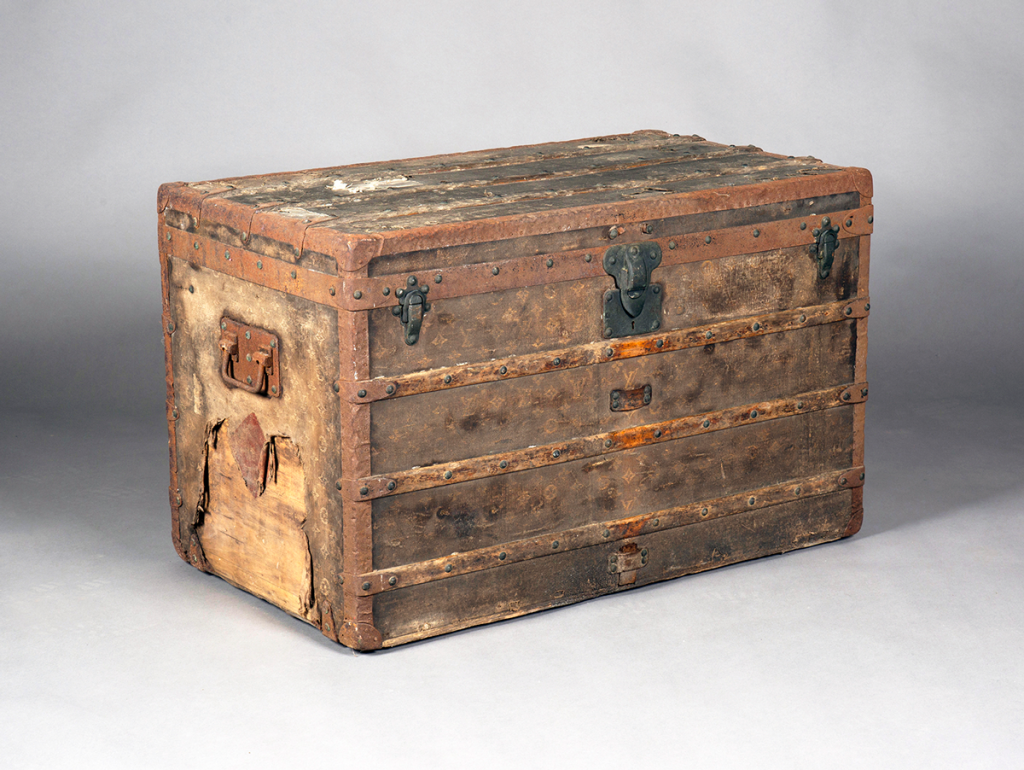
The earliest Louis Vuitton zinc covered ‘explorer’s’ cabin trunks were not decorated with the famous Louis Vuitton LV until 1896.
The Louis Vuitton ‘malle cabine’ trunk illustrated dates from around 1895 and sold at Toovey’s for £30,500 breaking the previous house record of £26,000 for a Louis Vuitton trunk. The interior displayed the original printed label numbered ‘33525’.
This early trunk was beautifully crafted but quite plain in comparison to later examples. All Louis Vuitton trunks are numbered and it was the original numbered paper label in the interior which confirmed its authenticity and value.
The early story of Louis Vuitton is a romantic one caught up with the industrial and political revolutions of 19th century France. The company’s founder, Louis Vuitton, spent his early childhood in Anchay in the Jura region on the eastern borders of France. The 1830s witnessed a significant migration in France from countryside to city. In 1835 the thirteen year old Louis Vuitton left home. It took him two years to walk the 292 miles to Paris as he worked to feed himself along the way. He arrived in the city in 1837. These qualities of determination and hard work would inform his life and success.
At the age of sixteen Louis Vuitton was taken on as an apprentice in the workshop of the successful packer and box maker Monsieur Marechal where he quickly gained a reputation for his abilities in this fashionable field of enterprise.
In 1854 he married Clemence-Emile Parriaux and left Marechal to found Louis Vuitton. To begin with he specialized in packing fashions and fragile objects. It was not until 1858 that he introduced his revolutionary rectangular, stackable trunks. They were an immediate success and the business expanded.
Napolean III and the French Empire was re-established in 1852 and Louis Vuitton was hired as the personal box maker to the Empress of France, Eugine de Montijo. This patronage and the period of urbanization and industrialization that ensued brought Europe’s elite to his firm.

The quality of Louis Vuitton’s work, his determination and hard work continued until his death in 1892. His son George Vuitton would build on his father’s foundations and establish Louis Vuitton as a worldwide company.
It was George who launched the famous LV monogram on a brown ground that you can see on the other Louis Vuitton travelling trunk illustrated. The trunk dates from the late 19th/early 20th century. Worn but original it realised £2600.
The story of the founder, Louis Vuitton, together with the beautiful craftsmanship which he established ensure that the earliest and rarest examples of the company’s work attract international attention at auction and underpin the continued reputation of this luxury brand today.